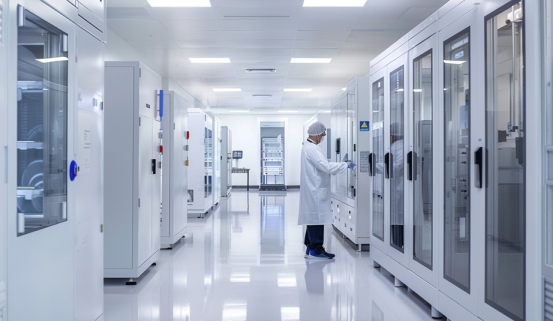

In sectors where even the tiniest particles can disrupt outcomes, cleanroom services play an indispensable role. From pharmaceuticals and biotech to electronics and aerospace, these tightly regulated spaces are designed to maintain exacting environmental conditions. Through advanced filtration and strict operational protocols, cleanrooms safeguard both product quality and workplace safety, ensuring compliance with the highest industry expectations.
In sectors where even the tiniest particles can disrupt outcomes, cleanroom services play an indispensable role. From pharmaceuticals and biotech to electronics and aerospace, these tightly regulated spaces are designed to maintain exacting environmental conditions. Through advanced filtration and strict operational protocols, cleanrooms safeguard both product quality and workplace safety, ensuring compliance with the highest industry expectations.

Cleanroom services encompass specialized practices that sustain environments with minimal airborne particles and contaminants. They are vital in industries where cleanliness and accuracy directly impact safety, performance, and product reliability.
Sectors such as semiconductor manufacturing, life sciences, and advanced engineering rely on these services to guarantee uninterrupted contamination control. Compliance with international standards, especially ISO guidelines, is central to their operation. Expert technicians employ approved cleaning agents, precision tools, and rigorous procedures to preserve both air purity and surface hygiene, while filtration systems continuously remove microscopic threats.
Strict adherence to cleanroom standards is critical to modern production. Tiny contaminants that seem insignificant can damage electronic circuits, compromise sterile medicines, or affect research data. Maintaining control reduces the risks of product defects, costly recalls, and regulatory breaches.
By upholding these standards, companies not only protect their products but also maintain customer trust and safeguard their reputation in competitive markets.
Cleanrooms are organized by ISO classifications, which define allowable particle counts per cubic meter. Ratings range from ISO 1 (ultra-clean) to ISO 9 (less stringent). Each level specifies requirements for airflow, gowning, cleaning methods, and equipment maintenance.
Common types include:
Semiconductor cleanrooms – where particle elimination is crucial due to microscopic circuit structures.
Pharmaceutical cleanrooms – designed to ensure sterility and protect patient health.
Aerospace cleanrooms – where high-precision assembly requires minimal particulate interference.
Choosing the right classification ensures that processes align with industry-specific needs.
Efficient cleanroom performance depends on multiple systems working together. HEPA or ULPA filters capture airborne particles, while climate-control units regulate temperature, pressure, and humidity to prevent contamination.
Surface cleaning is performed with specialized tools and low-residue solutions to avoid reintroducing contaminants. Walls, ceilings, and work areas are maintained on strict schedules, supported by real-time monitoring equipment like particle counters.
Regular calibration, maintenance, and inspections are essential to sustaining compliance and reliability.
Cleanroom cleaning is methodical and structured. The process typically begins with dry particle removal, followed by wet cleaning with solutions compatible with sensitive surfaces. In some cases, ionized water or antimicrobial treatments are applied for sterilization.
Disposable supplies are often used to reduce cross-contamination, while checklists ensure thorough coverage of every surface, from high-contact areas to hidden corners. Both manual cleaning and automated systems play a role in maintaining consistent cleanliness levels.
Employees working in cleanroom environments receive comprehensive instruction in contamination prevention, chemical handling, and proper use of protective equipment. Training covers gowning procedures, controlled entry/exit, and correct handling of tools and materials.
Refresher courses, safety certifications, and compliance updates keep staff aligned with evolving standards and best practices. This human factor is just as critical as the technology itself.
Cleanroom services are indispensable across industries where contamination can cause critical setbacks.
Electronics: a single particle can ruin microchips and reduce production yields.
Pharmaceuticals and medical devices: contamination risks affect both efficacy and patient safety.
Aerospace and defense: high-value components require particle-free assembly conditions.
Research laboratories: controlled environments ensure accuracy and repeatable results.
Technology is rapidly advancing cleanroom operations. ULPA filtration surpasses HEPA standards in efficiency, while IoT-enabled systems provide real-time monitoring and predictive adjustments.
Robotic cleaning solutions minimize human error and foot traffic, reducing risks of contamination. Meanwhile, new antimicrobial materials and easy-clean surfaces improve hygiene while lowering maintenance frequency.
To maintain credibility, organizations must comply with global standards such as ISO classifications. Regular inspections, internal audits, and third-party certifications validate environmental quality.
Detailed documentation—covering cleaning cycles, monitoring records, and staff training—is vital for passing audits and ensuring transparency. Compliance protects both operational continuity and brand reputation.
As industries grow more complex, cleanroom requirements will continue to evolve. Future innovations are expected to prioritize sustainability, including eco-friendly cleaning agents and energy-efficient airflow systems.
Automation, AI-driven monitoring, and predictive maintenance will likely become standard, further enhancing efficiency while reducing contamination risks.
Cleanroom services form the backbone of industries where precision and sterility are non-negotiable. By integrating advanced cleaning techniques, cutting-edge technology, and strict regulatory compliance, they guarantee that controlled environments deliver consistent quality and safety. As global standards tighten and technology advances, cleanroom services will remain a cornerstone of reliable, high-performance production and research.